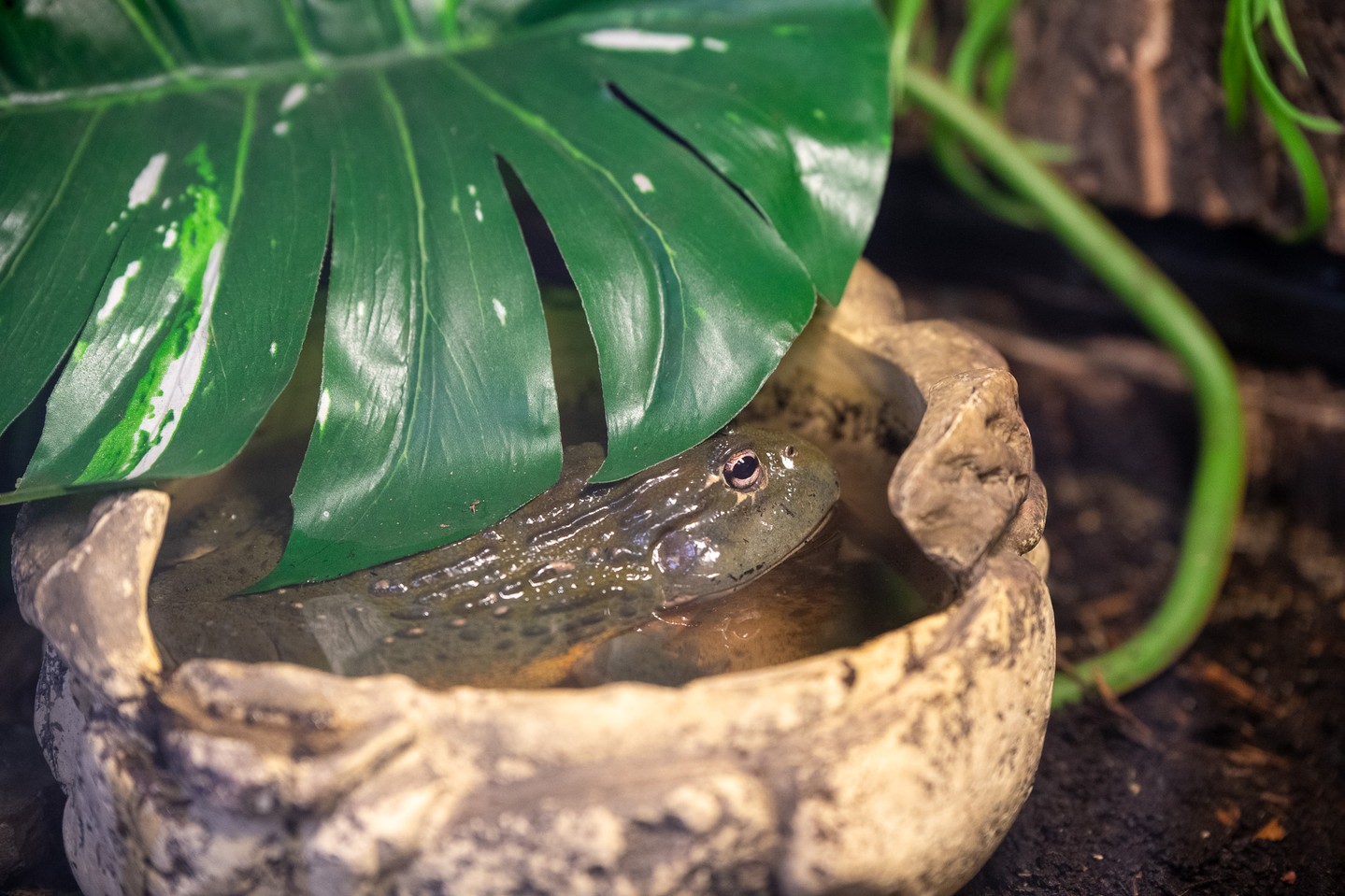- The behavior of African bullfrogs in response to high temperatures.
- The ecological role and adaptation strategies of amphibians in hot climates.
- Insights into effective zoo management for species like the African bullfrog.
- Conservation efforts and the educational role of zoos in wildlife awareness.
- Strategies for keeping cool for animals and humans during extreme heat.
When the sun blazes overhead and temperatures soar, each creature has its way of seeking relief. While people might flock to sandy shores, the African bullfrog knows just how to relax—by settling into a cool, comfortable puddle. This behavior is not just a whimsical preference; it reflects intricate survival strategies developed within blistering environments. By examining these actions, we uncover broader ecological principles and gain insights into the essential roles played by such creatures in our ecosystems.
African bullfrogs, native to the subtropical regions of Africa, are among the largest and most resilient amphibians. When faced with heat, these hefty frogs exhibit a fascinating behavior called estivation, a process akin to hibernation but triggered by the dry season. By digging underground or immersing themselves in water, they reduce metabolic activity, conserving energy until more favorable conditions return.
Understanding this behavior reveals critical aspects of the species’ ecology. As amphibians, their skin plays a crucial role in respiration and moisture retention. The unique cellular structure allows not only gas exchange but also absorption of water, mitigating the dire impacts of dehydration. Their impressive stamina during adverse conditions underscores the adaptability and resilience required to thrive in challenging climates.
In the controlled environment of modern zoos, such as the Lake Superior Zoo, replication of these natural habitats is essential. Effective zoo management demands careful attention to temperature, humidity, and enclosure design to mimic the bullfrog’s native environment. This involves not only the provision of water bodies or moist substrates but also ensuring proper diet and healthcare. The welfare of these creatures depends on integrated management practices that reflect their natural predilections and behaviors.
Beyond serving as a haven for these frogs, zoos serve an educational role. They are crucial in raising public awareness about conservation and the environmental challenges facing wildlife. Educational programs and interactive exhibits are designed to engage visitors, fostering a connection between people and wildlife. Observing the African bullfrog’s leisurely plunge into a puddle may seem simple, but it invites deeper reflection on our interaction with nature and the necessity of protecting such unique creatures.
Conservation efforts are paramount in the survival of many amphibian species, including African bullfrogs. Their populations are threatened by habitat loss, pollution, and climate change. Organizations collaborate with zoos to develop breeding programs, habitat restoration projects, and policy advocacy. These initiatives are aimed at both preserving current populations and restoring their natural habitats.
Engaging with visitors, zoos encourage active participation in conservation, promoting actions that individuals can take to mitigate climate change and protect biodiversity. Education centers and outreach programs disseminate critical information, inspiring community involvement and fostering environmental stewardship.
Finally, reflecting on the simple joys of staying cool offers both a lesson in adaptation and a reminder of our shared environment. As we enjoy air-conditioned spaces or splash in pools, animals adopt their strategies. From birds seeking shade to mammals altering their activity patterns, staying cool is a universal need. Observing these behaviors, we can apply similar tactics to enhance our comfort while appreciating the diverse adaptations in the animal kingdom.
By examining how species like the African bullfrog manage heat, we also recognize our broader responsibility to maintain the habitats and climates that these adaptations depend upon. As stewards of the planet, it is our duty to protect and preserve the rich tapestry of life, ensuring that each species can continue to thrive in its unique way.
*****
Source Description
When that heat hits, some of us hit the beach… and others hit the water dish. 💦☀️
Our African bullfrog knows exactly how to beat the heat—by plopping right into the perfect little puddle. This chonky amphibian is living her best life!
Stop by the Lake Superior Zoo to say hi and take notes from the ultimate chill master.
How are you keeping cool today? Let us know in the comments! 🐸


